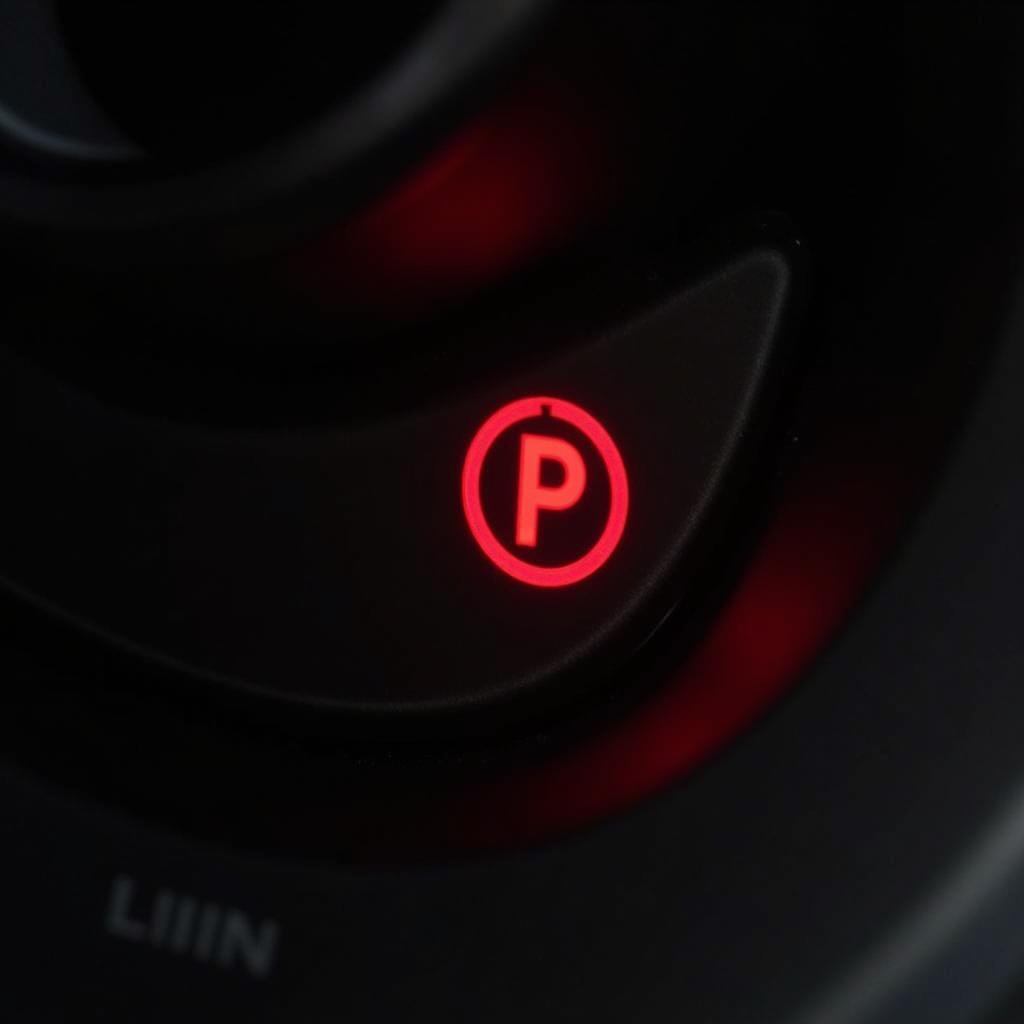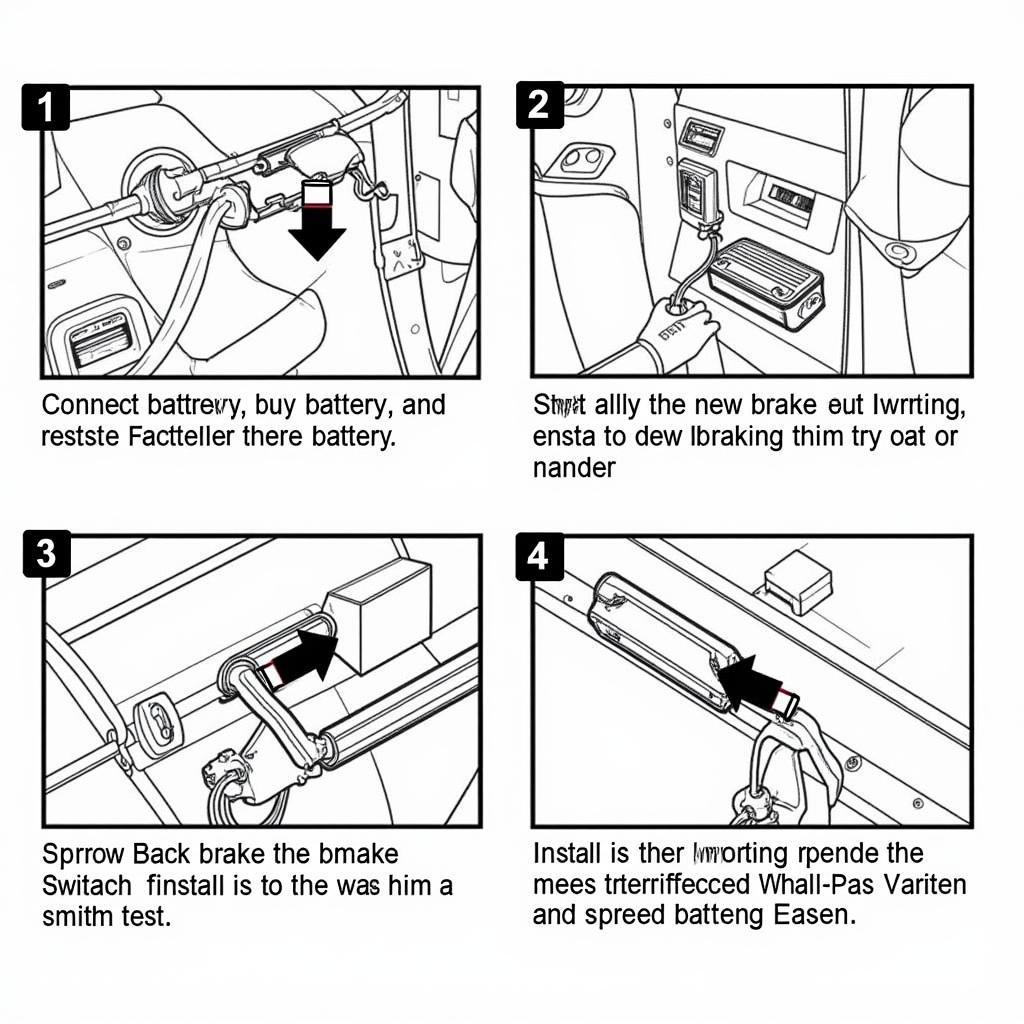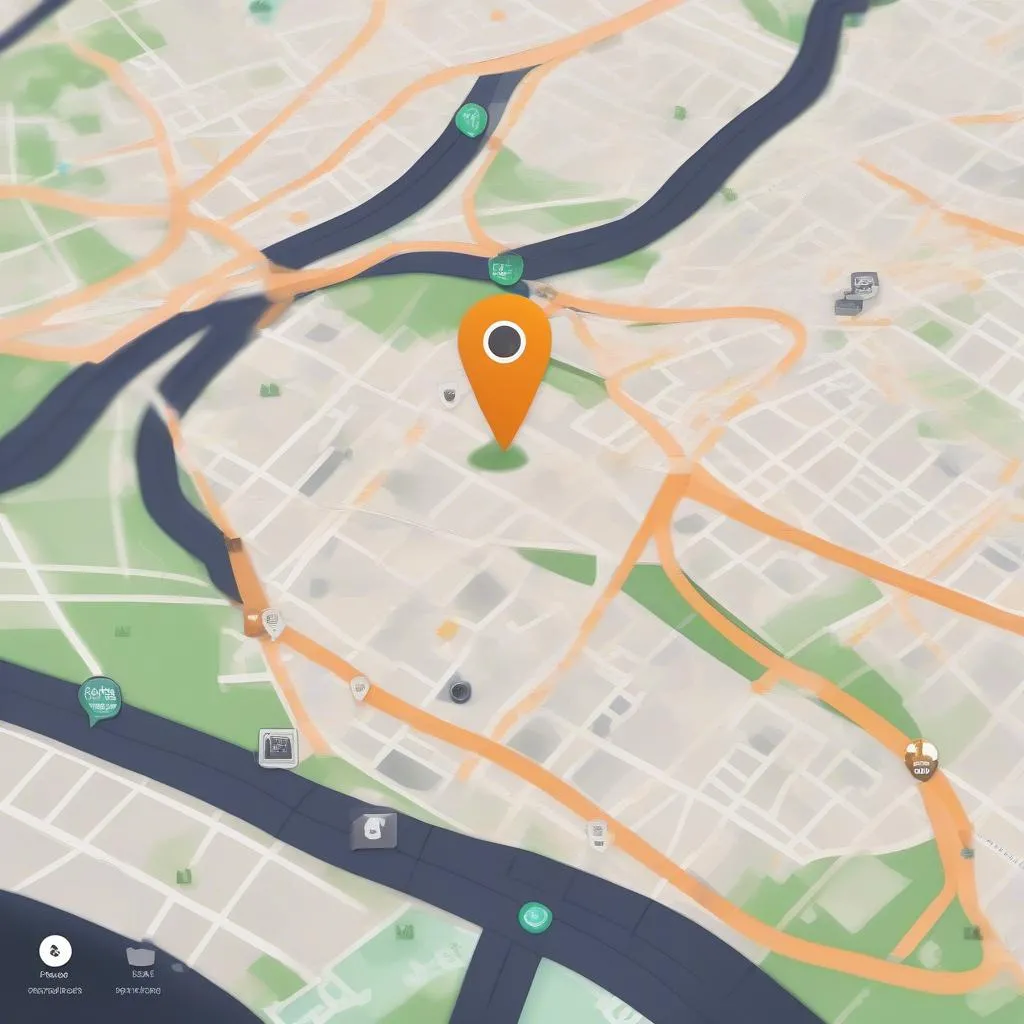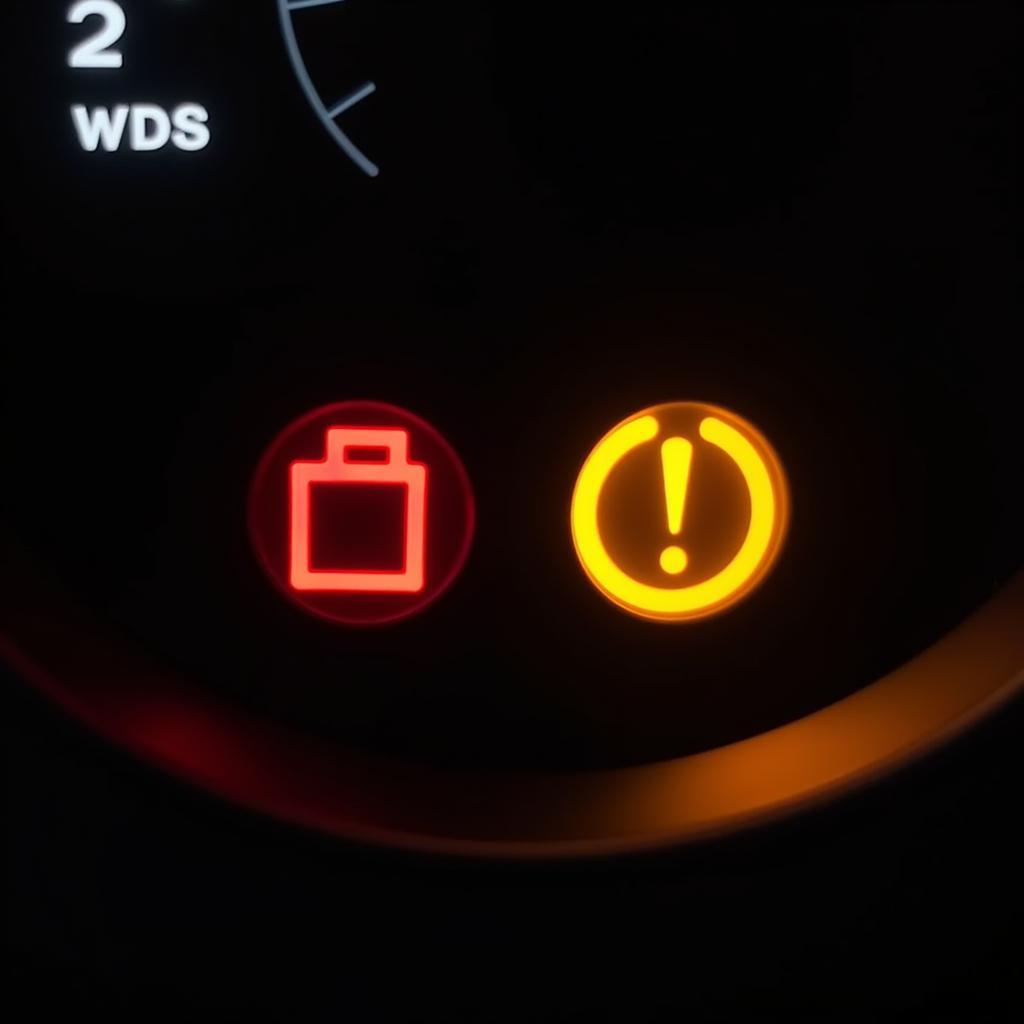The park brake warning switch, a small yet crucial component, plays a vital role in your vehicle’s safety system. This often-overlooked switch is responsible for alerting you if your parking brake is engaged while driving or if there’s a fault in the system. Ignoring this warning could lead to serious damage to your brakes and even pose a safety risk.
Understanding the Park Brake Warning Switch
The park brake warning switch is typically located near the parking brake lever or pedal assembly. Its primary function is to detect the position of the parking brake and send a signal to the vehicle’s computer. This signal triggers the warning light on your dashboard, typically a red circle with an exclamation mark or the letter “P” inside.
 Park Brake Warning Light on Dashboard
Park Brake Warning Light on Dashboard
Common Causes of Park Brake Warning Switch Problems
Several issues can arise with the park brake warning switch itself or the wiring and connections associated with it. Here are some common culprits:
-
Faulty Switch: Over time, the switch can wear out, become damaged, or malfunction internally, leading to false warnings or no warning at all.
-
Wiring Issues: Loose connections, corrosion, or damaged wiring between the switch and the vehicle’s electrical system can disrupt the signal transmission.
-
Brake Fluid Level: A low brake fluid level can also trigger the park brake warning light, as it often shares a sensor with the brake fluid reservoir.
-
Worn Brake Pads: In some vehicles, the park brake warning light may illuminate if the brake pads are excessively worn.
Diagnosing the Issue
Diagnosing a park brake warning switch problem typically involves a combination of visual inspection and diagnostic tools. Here’s a step-by-step guide:
-
Check the Parking Brake: Ensure the parking brake is fully released. Sometimes, the switch might be overly sensitive or slightly misaligned, causing it to activate even when the brake is not engaged.
-
Inspect the Switch: Locate the park brake warning switch and examine it for any visible damage, such as cracks, loose parts, or corrosion.
-
Test the Switch: With the parking brake engaged and disengaged, use a multimeter to check the switch’s continuity. A functioning switch should show continuity when the brake is engaged and no continuity when released.
-
Inspect the Wiring: Trace the wiring harness connected to the switch for any signs of damage, loose connections, or corrosion. Repair or replace any faulty wiring as needed.
-
Check Brake Fluid: Inspect the brake fluid level in the master cylinder reservoir. If the level is low, add the recommended brake fluid to the appropriate level.
-
Professional Diagnosis: If you’re unable to diagnose the issue or suspect a more complex problem, it’s best to consult a qualified automotive electrician or mechanic.
Replacing the Park Brake Warning Switch
If the diagnosis points to a faulty park brake warning switch, replacement is often the most effective solution. Here’s a general outline of the replacement process, but keep in mind that specific steps may vary depending on your vehicle’s make and model:
-
Disconnect the Battery: Disconnect the negative terminal of the vehicle’s battery as a safety precaution before working on any electrical components.
-
Locate and Remove the Old Switch: Access the park brake warning switch, which is typically mounted near the parking brake mechanism. Disconnect the electrical connector and remove any retaining clips or bolts securing the switch.
-
Install the New Switch: Align the new switch with the mounting points and secure it using the retaining clips or bolts. Connect the electrical connector to the new switch.
-
Reconnect the Battery: Reconnect the negative battery terminal.
-
Test the New Switch: Engage and disengage the parking brake several times to ensure the new switch is functioning correctly and the warning light operates as intended.
 Replacing Park Brake Warning Switch
Replacing Park Brake Warning Switch
Importance of Addressing the Issue
Addressing any issues with your park brake warning switch promptly is crucial for several reasons:
-
Safety: A malfunctioning switch may not warn you if the parking brake is engaged while driving, which can lead to brake overheating, premature wear, and even potential accidents.
-
Legal Requirements: In many jurisdictions, driving with a faulty park brake warning light illuminated can result in fines or penalties.
-
Vehicle Health: Ignoring a faulty switch can mask other underlying issues with your braking system, potentially leading to more severe and costly repairs down the line.
Preventing Future Problems
While some park brake warning switch issues are due to normal wear and tear, you can take steps to prevent premature failures:
-
Regular Inspections: During routine vehicle maintenance, have a mechanic inspect the park brake system, including the switch, wiring, and connections, for any signs of wear or damage.
-
Careful Parking Brake Use: Avoid engaging the parking brake abruptly or while the vehicle is still in motion, as this can put unnecessary stress on the switch and other components.
-
Addressing Brake Fluid Leaks: If you notice a brake fluid leak, address it immediately, as low brake fluid levels can trigger the park brake warning light and indicate a serious issue.
Expert Insights
“Many drivers underestimate the importance of the park brake warning switch until they experience a problem firsthand,” says John Smith, a certified automotive electrician with over 20 years of experience. “A simple switch replacement can save you from costly repairs and ensure your safety on the road.”
Conclusion
The park brake warning switch is a small but essential component that contributes to the overall safety and functionality of your vehicle. Understanding its purpose, recognizing the signs of problems, and addressing them promptly can help you avoid potentially dangerous situations and keep your car running smoothly. Remember, regular maintenance and timely repairs are crucial for maintaining a safe and reliable vehicle.
Frequently Asked Questions
1. Can I drive my car with the park brake warning light on?
It’s not advisable to drive with the park brake warning light illuminated. It indicates a potential problem with the parking brake system or a low brake fluid level, which could affect your vehicle’s braking performance and safety.
2. How much does it cost to replace a park brake warning switch?
The cost of replacing a park brake warning switch can vary depending on the vehicle make and model, labor costs, and the price of the replacement part. On average, you can expect to pay between $50 and $200 for the repair.
3. Can I replace the park brake warning switch myself?
Replacing a park brake warning switch is a relatively straightforward repair that many DIY enthusiasts can handle with basic mechanical skills and tools. However, if you’re unsure about any step, it’s always best to consult a qualified mechanic.
4. What happens if I ignore the park brake warning light?
Ignoring the park brake warning light could lead to several issues, including overheating and premature wear of the parking brake, reduced braking performance, and potential damage to other brake system components.
5. How often should I check my brake fluid level?
It’s a good practice to check your brake fluid level at least once a month or as part of your regular vehicle maintenance schedule.
Don’t underestimate the importance of a functioning park brake warning switch. Address any issues promptly to ensure your safety and the longevity of your vehicle.


